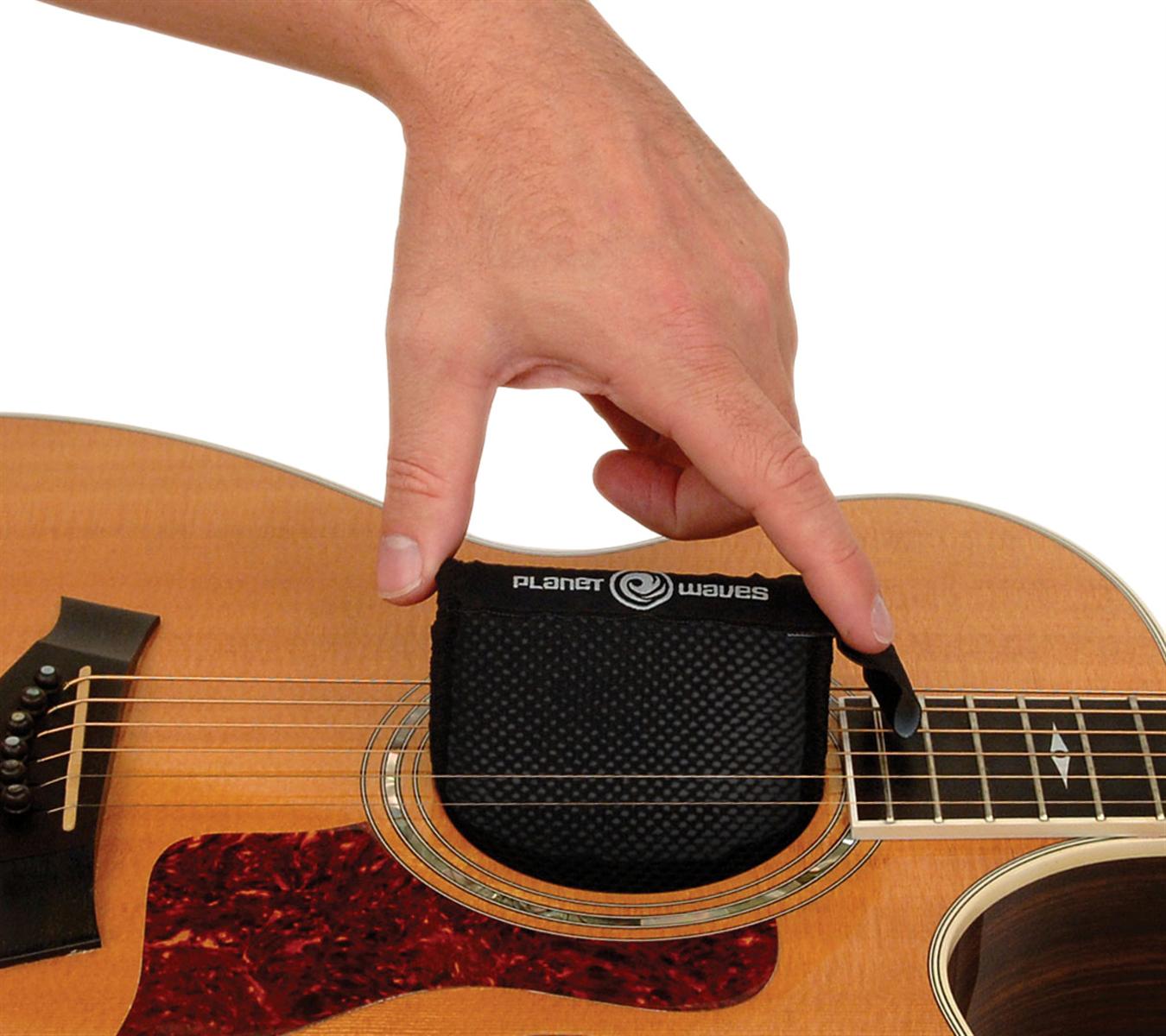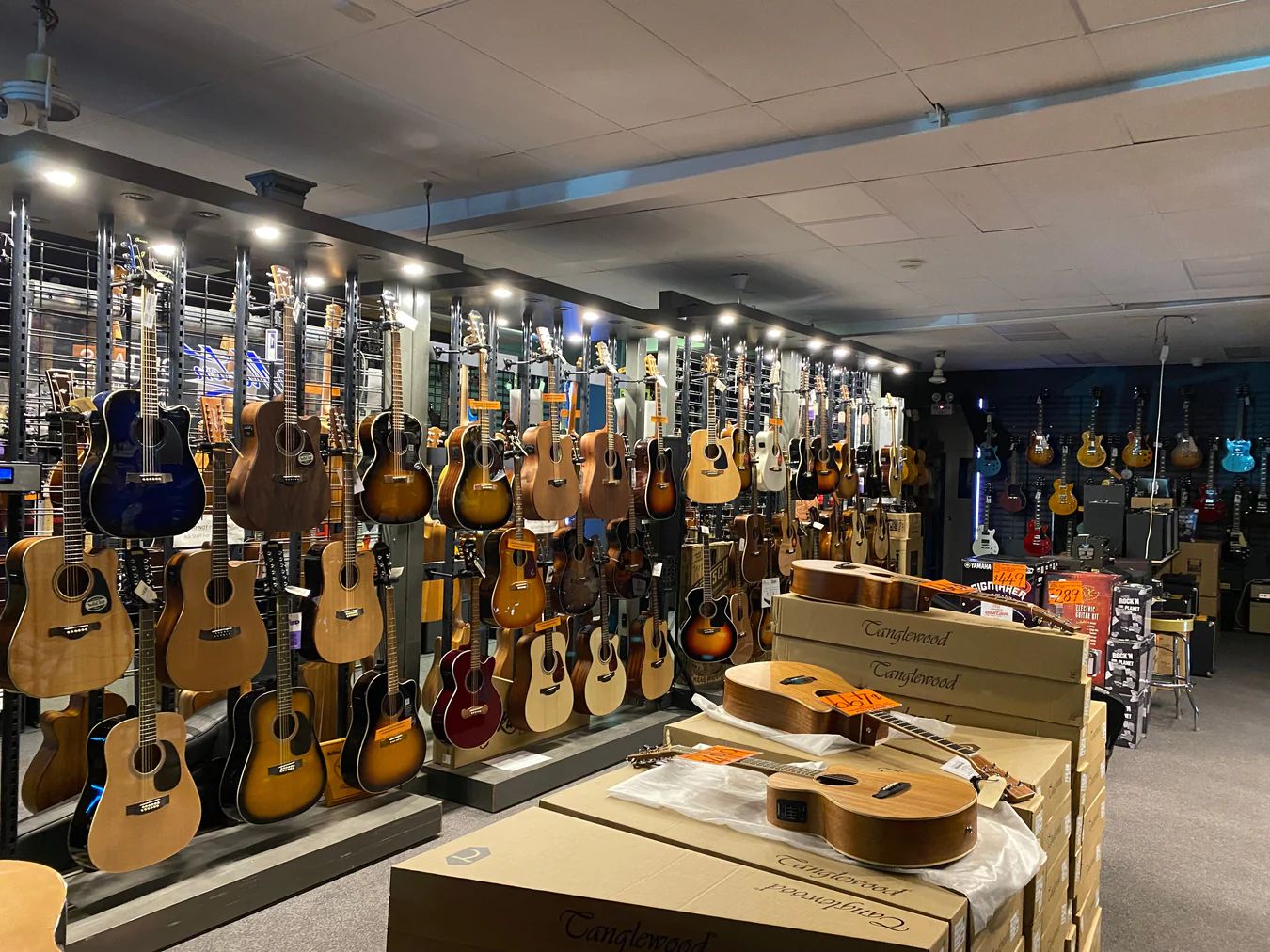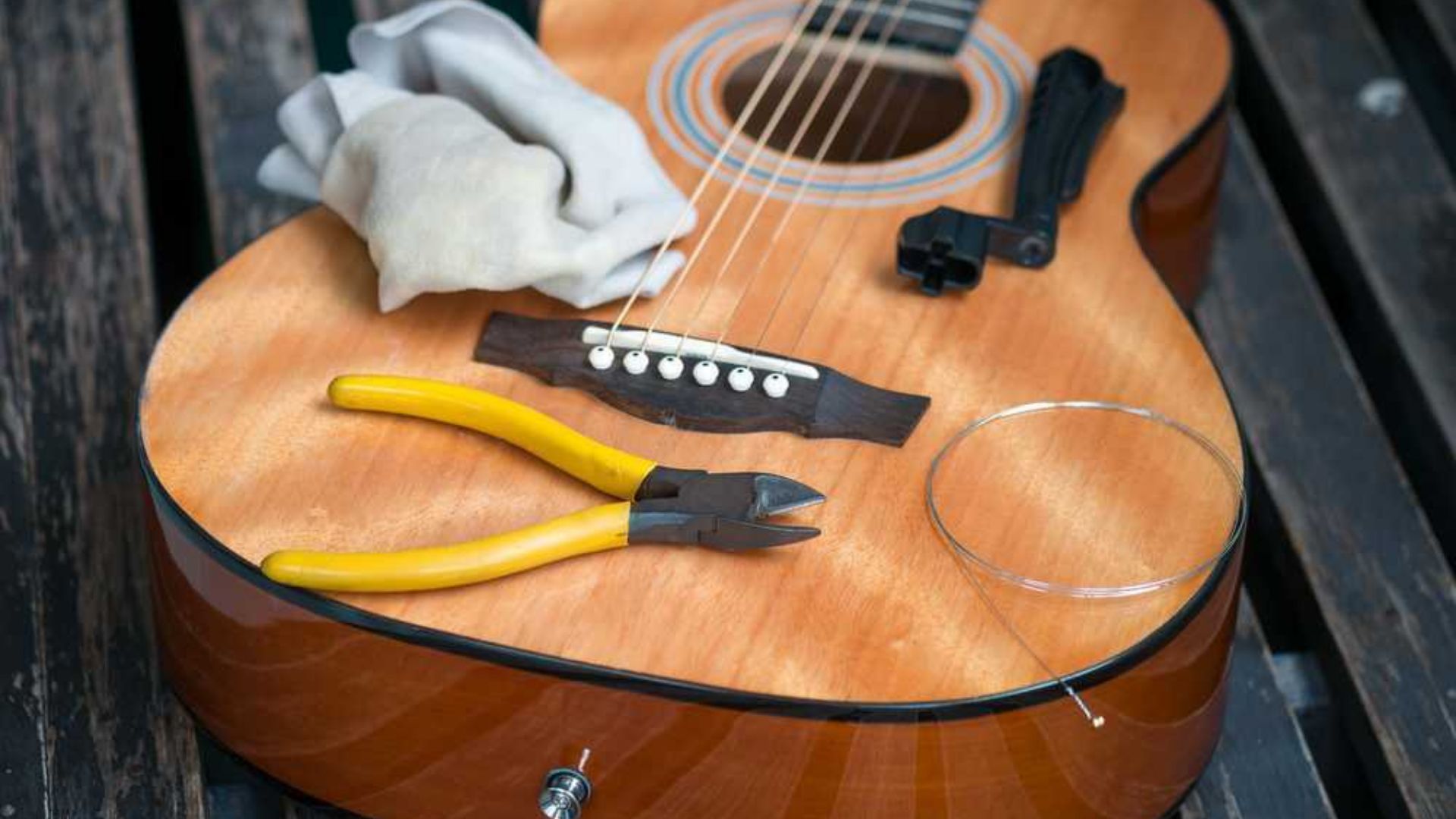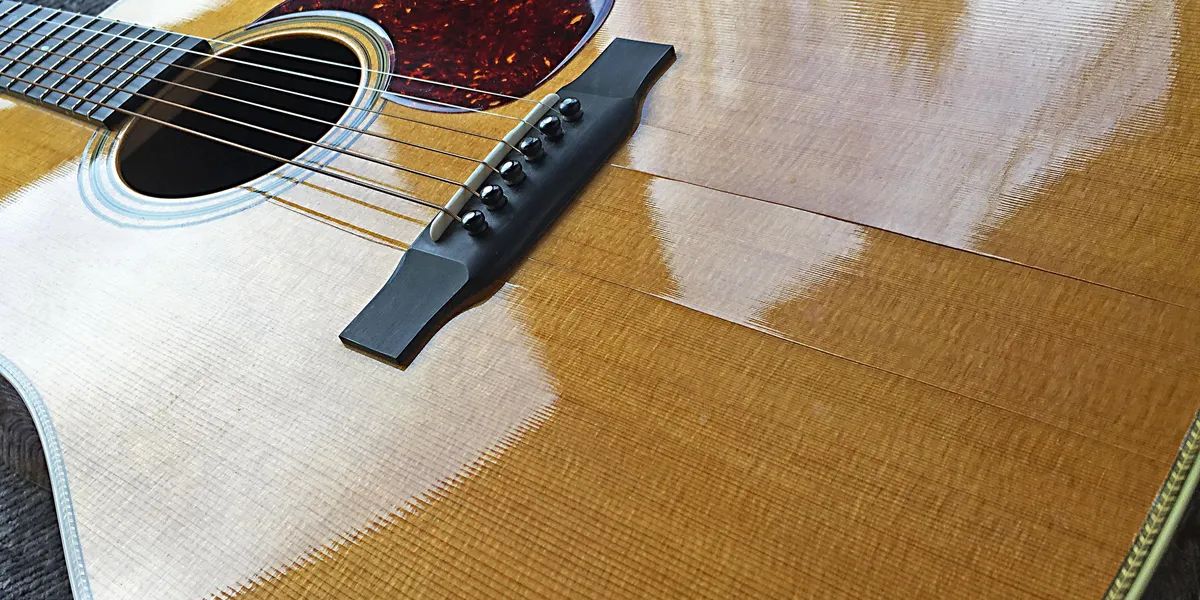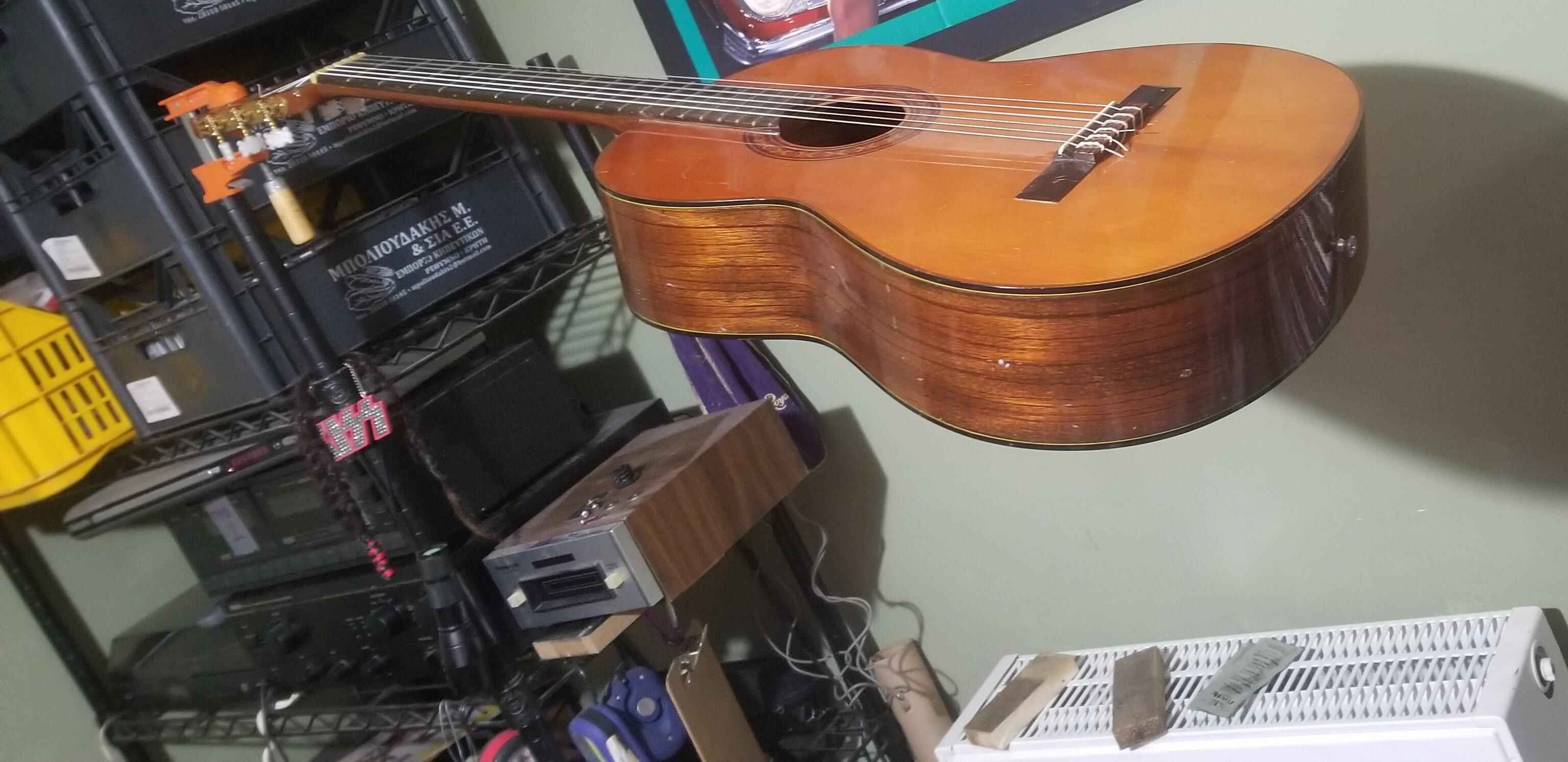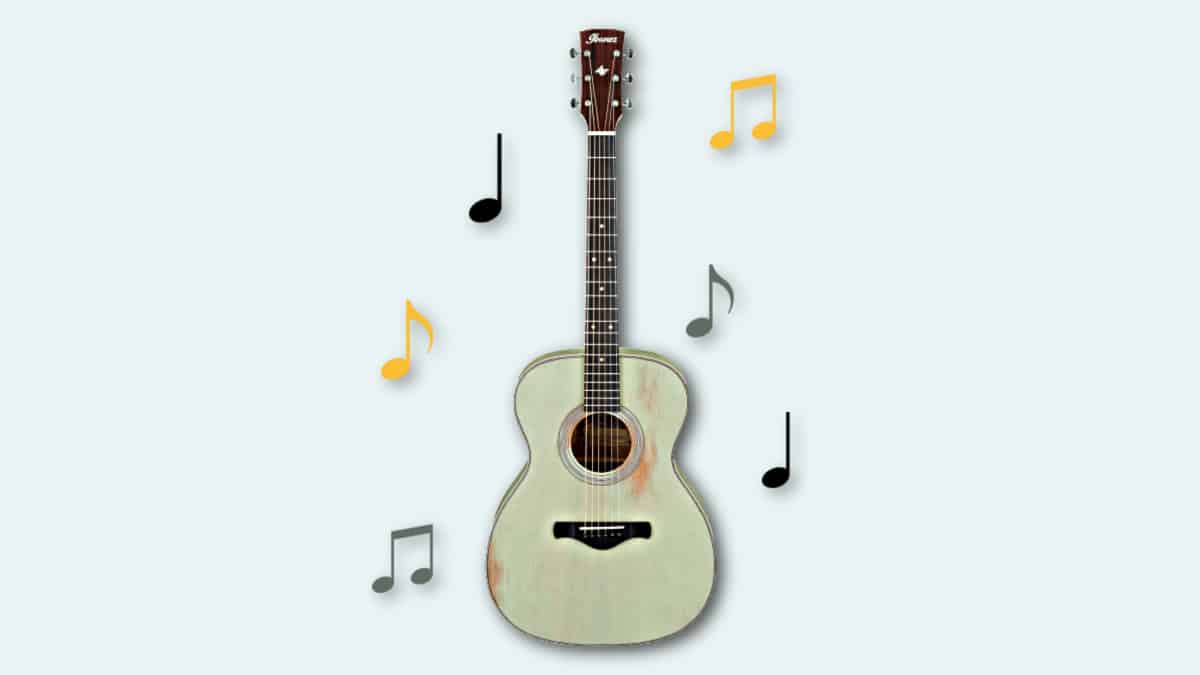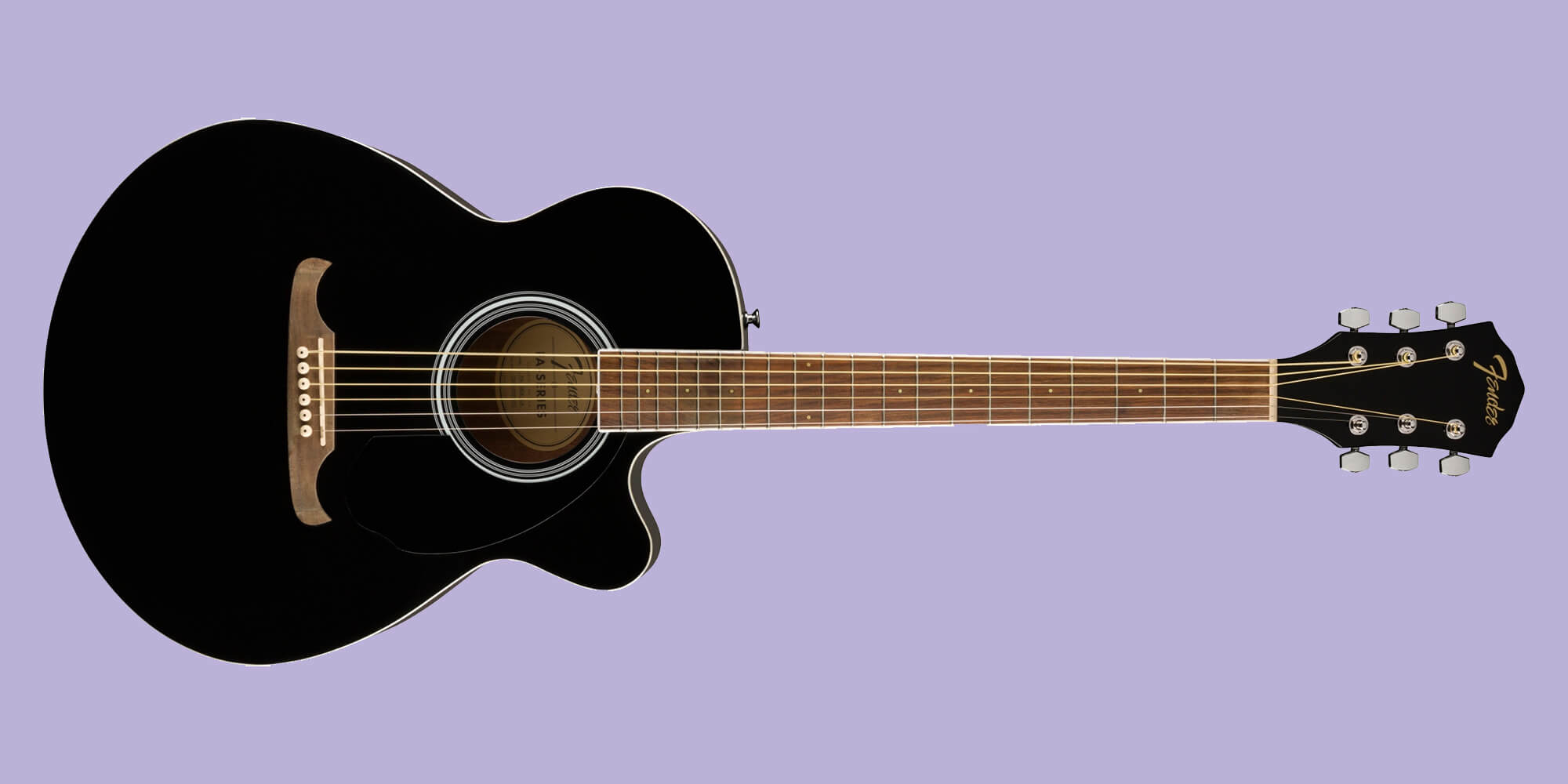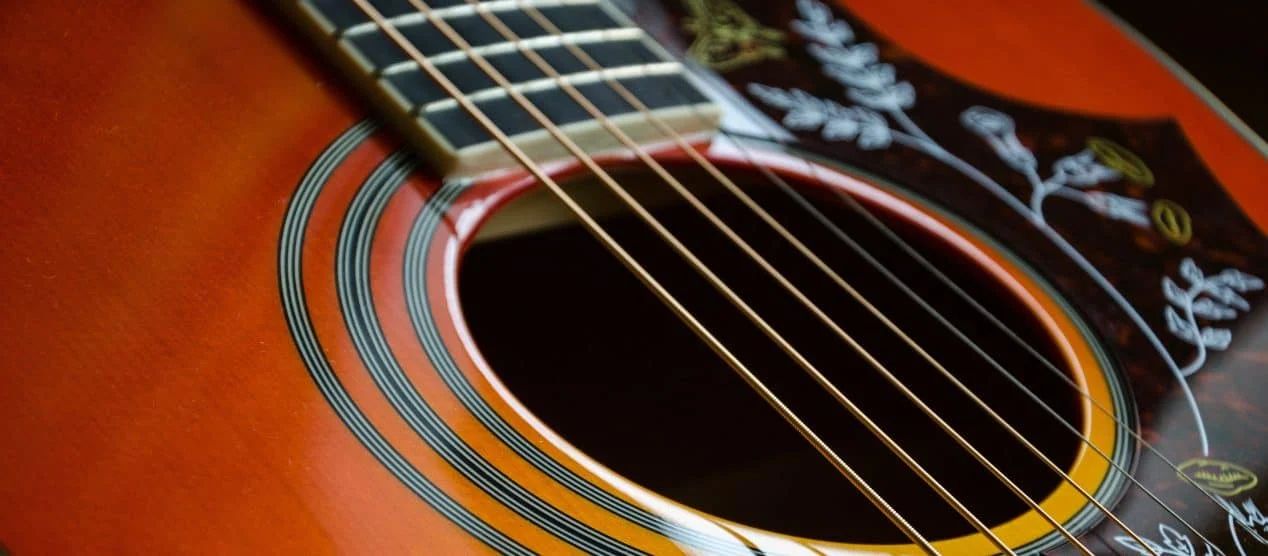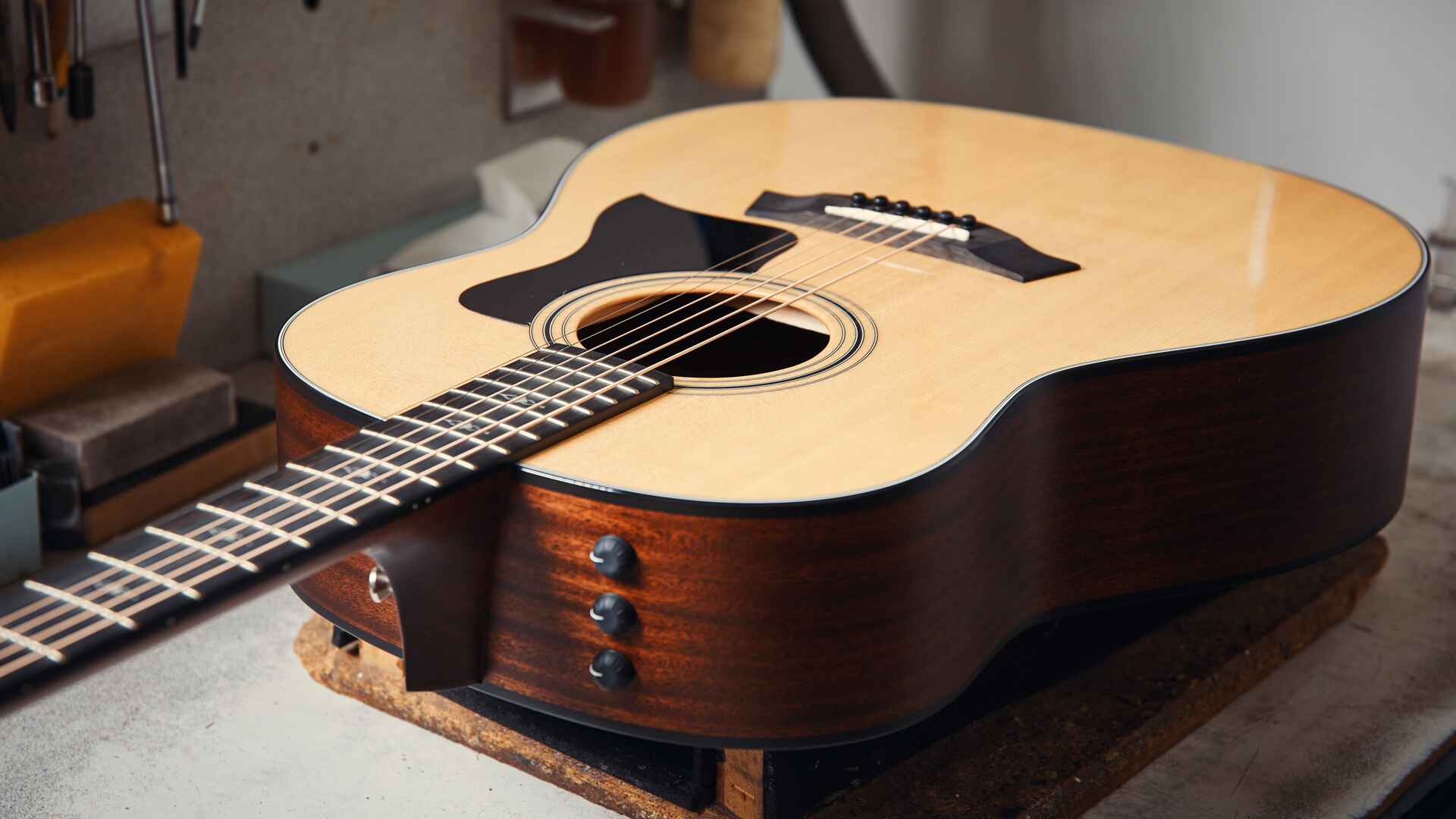Introduction
When it comes to the care and maintenance of acoustic guitars, one crucial factor that often gets overlooked is humidity. The level of humidity in the environment can significantly impact the condition and performance of your precious instrument. Whether you are a professional musician or a hobbyist, understanding the role of humidity in preserving the integrity of your acoustic guitar is essential.
Humidity refers to the amount of moisture present in the air, and it can vary depending on the region, season, and indoor environments. The structure of an acoustic guitar is made up of wood, which is highly susceptible to changes in humidity. The fluctuations in moisture content can cause the wood to expand or contract, leading to a myriad of issues, including cracking, warping, buzzing, and changes in tonal quality.
Many guitar players and owners underestimate the implications of poor humidity control, and the consequences can be devastating. A lack of knowledge in this area can result in costly repairs, diminished sound quality, and even irreversible damage to your instrument. Therefore, it is crucial to understand the significance of humidity for acoustic guitars and take appropriate measures to maintain the optimal environment.
In this comprehensive guide, we will explore the importance of humidity for acoustic guitars, the ideal humidity range, the effects of low and high humidity, as well as the various methods available to control and manage humidity for your instrument’s well-being. By the end of this article, you will have a clear understanding of how to protect your acoustic guitar and ensure its longevity.
Importance of Humidity for Acoustic Guitars
Humidity plays a crucial role in the overall well-being of an acoustic guitar. As mentioned earlier, the structure of an acoustic guitar is primarily made of wood, which is a porous material. Wood is extremely sensitive to changes in humidity levels, which can have a significant impact on the instrument’s stability and tone.
One of the primary reasons why humidity is important for acoustic guitars is that it helps maintain the structural integrity of the instrument. When the humidity is within the ideal range, the wood expands or contracts evenly, ensuring that the instrument stays in shape. However, if the humidity levels are too low or too high, it can cause the wood to warp, crack, or even detach from the guitar’s body.
In addition to maintaining the structural stability, humidity also affects the sound quality of the guitar. When the humidity is too low, the wood can become dry and brittle, resulting in a reduced resonance and tonal quality. On the other hand, high humidity can cause the wood to absorb excess moisture, leading to a dampened sound and decreased sustain.
Furthermore, humidity also impacts the playability of an acoustic guitar. When the wood absorbs moisture, it can become swollen, causing the strings to sit higher off the fretboard. This can make it more difficult to play, resulting in increased finger fatigue and uncomfortable playing experience. Conversely, when the wood dries out, the strings may buzz against the frets or produce an unwanted buzzing noise.
Overall, maintaining the proper humidity levels is vital for preserving the investment you have made in your acoustic guitar. It ensures that the instrument remains structurally sound, produces the best possible tone, and provides optimal playability. By understanding the importance of humidity, you can take appropriate measures to create a suitable environment for your acoustic guitar and enjoy its full potential.
Ideal Humidity Range for Acoustic Guitars
For acoustic guitars, maintaining the ideal humidity range is vital to ensure their longevity and optimal performance. The recommended humidity range for acoustic guitars is typically between 40% and 60% relative humidity (RH). This range provides a stable environment that minimizes the risks of damage to your instrument.
When the humidity level drops below 40%, the wood of the guitar can become dry, leading to potential problems such as cracks, shrinkage, and warping. Low humidity can also cause the glue joints to weaken, compromising the overall structural integrity of the instrument. Additionally, the strings can feel stiffer and less responsive, affecting both the playability and tone.
On the other hand, excessive humidity above 60% RH can result in the wood absorbing excess moisture. This can cause the wood to swell, potentially leading to issues such as distortion, high action, and even mold or mildew growth. The excess moisture can also affect the lifespan of the strings and contribute to a muffled or dampened sound.
To maintain the ideal humidity range for your acoustic guitar, it is important to monitor the humidity levels in the environment. Using a hygrometer, which is a device that measures relative humidity, can help you accurately monitor the humidity levels and make necessary adjustments.
If the humidity is too low, you can increase it using a humidifier. There are various types of humidifiers available, such as soundhole humidifiers, which can be easily inserted into the guitar’s soundhole, or room humidifiers, which help regulate the humidity in the entire room. On the other hand, if the humidity is too high, you can use a dehumidifier or absorbent materials to reduce the moisture in the air.
It’s important to note that sudden changes in humidity can also be harmful to acoustic guitars. Gradual changes are generally better tolerated by the instrument. Therefore, it is advisable to keep the humidity level as stable as possible by using the appropriate humidity control devices or storing the guitar in a controlled environment, such as a stable room with consistent temperature and humidity levels.
By maintaining the ideal humidity range, you can ensure that your acoustic guitar remains in optimal condition, both structurally and tonally. This will not only prolong the life of your instrument but also enhance your playing experience and allow you to enjoy the full potential of your acoustic guitar for years to come.
Effects of Low Humidity on Acoustic Guitars
Low humidity can have detrimental effects on acoustic guitars due to the drying out of the wood. When the humidity level drops below the recommended range, typically below 40% relative humidity (RH), the following issues may arise:
- Cracking and Warping: The lack of moisture in the air can cause the wood to shrink and crack. This is especially common in the guitar’s soundboard, back, and sides. Additionally, low humidity can lead to warping, causing the neck to bend or twist, resulting in intonation problems and high action.
- Deterioration of Glue Joints: The glue used to hold the various components of the guitar together can weaken when the wood becomes overly dry. This can lead to loose braces, bridge lifting, or even complete separation of the guitar’s body, affecting its structural integrity.
- Reduced Sound Quality: The lack of moisture in the wood can result in diminished resonance and tonal quality. The guitar may produce a dull, lifeless sound rather than the rich, vibrant tones it is meant to deliver.
- Playability Issues: When the wood becomes dry, it can cause the strings to sit higher off the fretboard, making the guitar more challenging to play. This can lead to increased finger fatigue and decreased playability, affecting the overall performance.
- Instrument Damage: If not addressed promptly, low humidity can cause irreversible damage to the guitar. Cracked wood, loose braces, or detached components can require costly repairs or even render the instrument unplayable.
To mitigate the effects of low humidity, it is crucial to maintain proper humidity levels by using humidifiers. Soundhole humidifiers are popular options that can be easily inserted into the soundhole of the guitar to increase moisture in the air around the instrument. Additionally, storing the guitar in a humidity-controlled room or using room humidifiers can help maintain stable humidity levels.
By taking preventive measures and ensuring adequate humidity, you can protect your acoustic guitar from the negative effects of low humidity. This will help preserve its structural integrity, enhance its sound quality, and ensure a comfortable playing experience for years to come.
Effects of High Humidity on Acoustic Guitars
While low humidity poses significant risks to acoustic guitars, high humidity can also have adverse effects on the instrument. When the humidity level exceeds the recommended range, typically above 60% relative humidity (RH), the following issues may occur:
- Wood Swelling and Distortion: Excessive moisture in the air can cause the wood to absorb and retain water, resulting in swelling. This can lead to distortion of the guitar’s body and neck, causing issues with playability and affecting the instrument’s overall stability and intonation.
- Increased Risk of Mold and Mildew: High humidity creates an ideal environment for mold and mildew to grow. These fungi can damage the wood, compromise the glue joints, and produce musty odors, leading to potential health hazards and further deterioration of the instrument.
- Dampened Sound and Reduced Sustain: The excess moisture absorbed by the wood can dampen the sound produced by the guitar, resulting in a muffled or muted tone. The sustain, or the length of time the sound continues to ring out, may also be affected negatively.
- String Corrosion and Oxidation: High humidity can accelerate string corrosion and oxidation. This can lead to decreased lifespan and poor performance of the guitar strings, affecting the instrument’s playability and sound quality.
- Uncomfortable Playing Experience: When the wood absorbs moisture, it can feel damp and sticky, making it uncomfortable to play. This can make it difficult to slide fingers along the fretboard and hinder the smooth execution of playing techniques.
To combat the effects of high humidity, various humidity control measures can be employed. Using dehumidifiers or absorbent materials can help reduce excess moisture in the air and maintain a more stable humidity level. Additionally, storing the guitar in a controlled environment, such as a humidity-controlled room or case with moisture-absorbing packets, can help mitigate the risks of high humidity.
By proactively managing high humidity levels, you can protect your acoustic guitar from potential damage, preserve its sound quality, and ensure optimal playability. Regular monitoring and appropriate humidity control measures are essential in maintaining the integrity and performance of your instrument.
Maintaining the Proper Humidity for Acoustic Guitars
To ensure the longevity and optimal performance of your acoustic guitar, it is crucial to maintain the proper humidity levels. Here are some essential steps to help you maintain the ideal humidity for your instrument:
- Use a Hygrometer: A hygrometer is a device that measures relative humidity. Invest in a reliable hygrometer to accurately monitor the humidity levels in the environment where your guitar is stored or played.
- Keep the Guitar in a Controlled Environment: Avoid exposing your guitar to extreme fluctuations in temperature and humidity. Keep it in a stable room with consistent temperature and humidity levels whenever possible.
- Use a Humidifier: If the humidity is too low, consider using a humidifier to increase moisture in the air. Soundhole humidifiers, such as those filled with special water-absorbent materials, can be inserted into the guitar’s soundhole to regulate humidity levels.
- Use a Dehumidifier or Absorbent Materials: If the humidity is too high, use a dehumidifier or place absorbent materials, such as silica gel packets, near your guitar to reduce excess moisture in the air.
- Store the Guitar in its Case: Storing your guitar in its case when not in use can help maintain a more stable environment. Guitar cases often have built-in humidity control features, such as moisture-absorbing packets or compartments for humidifiers.
- Regularly Inspect and Maintain the Guitar: Regularly inspect your guitar for any signs of damage or changes in playability. If you notice any issues, such as cracks or buzzing, consult a professional luthier for assessment and repairs.
It is important to note that different regions and seasons may present varying humidity levels. Therefore, it is crucial to adjust your humidity control measures accordingly. Additionally, remember that sudden changes in humidity can be detrimental to the guitar, so gradual changes are generally better tolerated by the instrument.
By consistently monitoring and maintaining the proper humidity levels for your acoustic guitar, you can help minimize the risks of damage, preserve its structural integrity, and ensure the best possible tone and playability. Protecting your instrument in this way will allow it to bring joy and inspiration for years to come.
Humidity Control Options for Acoustic Guitars
There are several effective humidity control options available to help maintain the proper humidity levels for acoustic guitars. Implementing these options can help protect your instrument from the negative effects of low or high humidity. Here are some popular humidity control options:
- Humidifiers: Humidifiers are devices designed to add moisture to the air. Soundhole humidifiers are commonly used for acoustic guitars. These small, portable devices can be easily inserted into the soundhole and release moisture to increase humidity around the guitar. They are available in various designs and typically use water-absorbent materials or sponge inserts to retain moisture.
- Room Humidifiers: Room humidifiers are larger devices that can regulate humidity in an entire room. They are ideal if you have multiple guitars or if you want to control the humidity for the entire music room or studio. Room humidifiers are available in ultrasonic, evaporative, or steam-based designs, and some models allow you to set specific humidity levels.
- Dehumidifiers: Dehumidifiers, on the other hand, are used to reduce excess moisture in the air. They are beneficial if you live in a humid climate or during the summer months when high humidity levels are common. Dehumidifiers come in various sizes and types, such as refrigerant dehumidifiers and desiccant dehumidifiers, allowing you to choose the most suitable option for your environment.
- Humidity-Controlled Cases: Humidity-controlled guitar cases are specially designed cases that help maintain a stable environment for your guitar. These cases often have built-in humidifiers or humidity control compartments, allowing you to regulate and monitor the humidity levels inside the case. They are particularly useful for traveling musicians or those who want extra protection for their guitar.
- Hygrometers: To accurately monitor the humidity levels, invest in a good-quality hygrometer. Hygrometers can give you real-time readings, allowing you to adjust and maintain the humidity levels for your guitar. There are various types of hygrometers available, including digital hygrometers and analog hygrometers, so choose the one that suits your preferences and budget.
It is important to select the humidity control option that best suits your needs, the climate you live in, and your specific guitar storage and playing conditions. Be mindful of regularly checking and maintaining the humidity control devices to ensure their effectiveness and accuracy.
Remember, maintaining the ideal humidity levels for your acoustic guitar is essential for its long-term health and performance. By utilizing the appropriate humidity control options, you can protect your instrument from the adverse effects of low or high humidity and ensure that it stays in optimal condition for years to come.
Tips for Humidity Management
Proper humidity management is crucial to ensuring the health and longevity of your acoustic guitar. Here are some useful tips to help you manage the humidity effectively:
- Invest in a hygrometer: Purchase a reliable hygrometer to monitor the humidity levels in the room where your guitar is stored or played. This will allow you to keep track of any fluctuations and take necessary action.
- Know the ideal humidity range: Familiarize yourself with the ideal humidity range for acoustic guitars (between 40% and 60% RH). This will help you create a stable environment that maintains the integrity of the instrument.
- Store your guitar properly: When not in use, store your guitar in its case. A case provides some level of insulation and helps maintain a more consistent humidity level compared to leaving the guitar out in the open.
- Use a humidifier when necessary: If the humidity level is too low, consider using a humidifier to increase the moisture in the air. Choose a suitable humidifier, such as a soundhole humidifier or a room humidifier, based on your specific needs.
- Choose a stable storage location: Find a stable room or area in your home where temperature and humidity levels are consistent. Avoid placing the guitar near direct sources of heat, such as radiators or heating vents.
- Avoid extreme humidity changes: Sudden changes in humidity can be harmful to your guitar. Try to maintain a gradual transition between different humidity levels to minimize stress on the wood and other components.
- Regularly inspect your guitar: Regularly inspect your guitar for any signs of damage or changes in playability. Look for cracks, excessive buzzing, or any unusual changes in the instrument’s appearance. Address any issues promptly to prevent further damage.
- Consult a professional: If you’re unsure about any aspect of humidity management for your acoustic guitar, it’s always a good idea to consult a professional luthier. They can provide expert guidance on humidity control, offer recommendations, and help with any necessary repairs or adjustments.
By implementing these tips, you can effectively manage the humidity levels for your acoustic guitar and ensure its optimal health and performance. Remember, consistency and regular maintenance are key to preserving your instrument and enjoying it for years to come.
Frequently Asked Questions about Humidity and Acoustic Guitars
1. Why is humidity control important for acoustic guitars?
Humidity control is important for acoustic guitars because wood, the primary material used in constructing these instruments, is highly sensitive to changes in humidity levels. Fluctuations in humidity can cause the wood to expand or contract, leading to structural issues, tonal changes, and playability problems.
2. What is the ideal humidity range for acoustic guitars?
The ideal humidity range for acoustic guitars is generally between 40% and 60% relative humidity (RH). This range provides a stable environment that minimizes the risks of damage and ensures optimal performance.
3. What happens if the humidity is too low?
If the humidity is too low, the wood can dry out, leading to potential issues such as cracking, warping, and changes in tonal quality. The strings can also be affected, resulting in increased stiffness and reduced playability.
4. What happens if the humidity is too high?
If the humidity is too high, the wood can absorb excess moisture, causing it to swell and potentially distort. High humidity can also lead to mold and mildew growth, dampened sound quality, and increased string corrosion.
5. How can I maintain proper humidity levels for my acoustic guitar?
You can maintain proper humidity levels by using humidifiers to increase moisture when it’s too dry and dehumidifiers or absorbent materials to reduce moisture when it’s too humid. Storing the guitar in a controlled environment, monitoring humidity with a hygrometer, and regular inspection and maintenance of the instrument are also important.
6. Can I use household humidifiers for my acoustic guitar?
While household humidifiers can be used to regulate the humidity levels in a room, it is recommended to use specifically designed guitar humidifiers for the instrument. These humidifiers are specially made to fit inside the guitar and release moisture in a controlled manner.
7. Should I remove the strings when storing my guitar to control humidity?
It is generally not necessary to remove the strings when storing your guitar to control humidity. However, if you plan to store the instrument for an extended period, you may consider loosening the tension on the strings slightly to reduce stress on the guitar neck.
8. What should I do if my guitar has been exposed to extreme humidity?
If your guitar has been exposed to extreme humidity, allow it to acclimate slowly to a stable and controlled environment. Avoid sudden changes in temperature or humidity, as this can cause further damage. If you notice any issues, consult a professional luthier for assessment and repairs.
9. Can I use a room humidifier in the same room where I store my guitar?
Yes, you can use a room humidifier in the same room where you store your guitar. However, you should ensure that the humidifier is not placed too close to the guitar and that it is set to maintain the appropriate humidity range for your instrument.
10. When should I consult a professional luthier regarding humidity-related issues?
If you have concerns about humidity-related issues, such as cracks, buzzing, or changes in playability, it is advisable to consult a professional luthier. They have the expertise to assess the condition of your guitar, recommend appropriate repairs, and offer guidance on humidity control.
Remember that controlling humidity is crucial for the health and performance of your acoustic guitar. If you have any specific concerns or questions, don’t hesitate to seek guidance from professionals in the field.
Conclusion
Proper humidity control is essential for maintaining the health and performance of your acoustic guitar. Understanding the effects of low and high humidity, as well as the ideal humidity range, is crucial to protect your instrument from potential damage.
By consistently monitoring and maintaining the proper humidity levels, you can prevent issues such as cracking, warping, tonal changes, and playability problems. Using humidifiers, dehumidifiers, and other humidity control options can help create a stable environment for your guitar, ensuring that it remains structurally sound and produces its best possible tone.
Remember to regularly inspect your guitar for any signs of damage or changes in playability. Consult a professional luthier if you have any concerns or need assistance with humidity-related issues. They have the expertise to guide you and provide necessary repairs or adjustments to keep your guitar in optimal condition.
By following the tips and guidelines outlined in this guide, you can effectively manage the humidity levels for your acoustic guitar. This will ensure its longevity,playability, and the preservation of its signature sound. With proper humidity control, your acoustic guitar will continue to bring joy and inspiration for many years to come.







